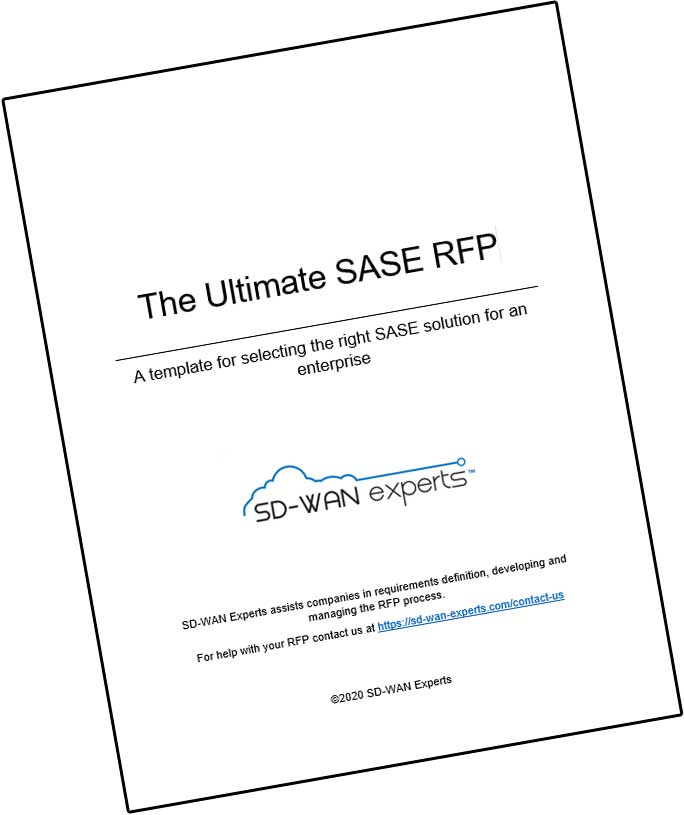So you’ve decided to move ahead with SD-WAN. Congratulations. As you start evaluating vendors, there will be all sorts of questions around speeds and feeds to ask, of course. But how can you gather that information in a way that’s as painless and effective as possible? After years of running evaluations, here are some of my practical dos and don’ts.
Don’t try to RFP the whole market
Your RFP isn’t meant to evaluate every possible SD-WAN solution on the market. There are too many SD-WAN offerings to make such an evaluation efficient and effective. Restrict the RFP selection to the products most likely to address your needs. In this, the RFP should be the culmination — not the beginning — of your vendor selection. Read vendor literature, understand vendor architectures, and identify the most promising vendors. Doing the leg work will not only bring you better responses but increase the likelihood vendors will choose to respond to your RFP request.
There are plenty of resources here that can help. Check out our SD-WAN Evaluation guide for starters. If you need help writing your RFP check out our WAN Jumpstart kit. It comes with an RFP template and one hour of technical consulting to help you adapt the template to your needs. Want to know what it’s like to manage these environments? Our comparison of SD-WAN management platforms will help.
Be very clear in your minimum criteria
Establish upfront the requirements essential for your deployment. Clear criteria will help you focus your efforts and avoid spending time evaluating products that can’t possibly meet your needs. Vendors will appreciate the clarity and be more likely to invest the necessary resources in creating a winning proposal. By the same token, you’ll also avoid irritating vendors that you might need to do business with in the future by forcing them to uselessly invest in an RFP process they have no chance of winning.
Focus on outcomes not just technologies
All too often, companies will ask about specific features — OSPF or BGP support, AES-level support, or support for Check Point or Palo Alto firewalls, to name a few examples. Where features translate into compliance, asking for the feature is essential. But all too often, companies will mistake the implementation, the feature, with the requirement. Vendors may have different ways of solving the same requirement. It’s generally less important if you implement BGP or SNMP and far more important that you dynamically update routes or provide end-point insight. This is particularly true when evaluating different types of architectures. Asking vendors about the CPU and amount of memory in their SD-WAN appliances, for example, is meaningless if the vendor runs most processing in the cloud.
Check your scoring
Creating a weighted scoring methodology will provide an objective measure for comparing vendors. Scores are an imperfect but an important tool in your selection process. Alone, however, they should not be relied upon to determine a winner; SD-WAN selection is more nuanced than that. As part of your scoring process, incentify vendors to provide complete answers. A simple notification to them that failing to provide details around compliance with a given feature will result in a lower score. That means no single word responses, such as “Comply” or “Supported.”Otherwise, you’ll end up unnecessarily penalizing vendors.
Don’t change your requirements after issuing your RFP
Answering an RFP requires a significant number of hours for every vendor. Take care before issuing your document. Vendors need to decide if they can meet your stated requirements before they commit to spending the time on a response. If you add any requirements after they have begun their response effort, if they can’t support the new requirement, they have wasted their time. Some companies refuse to respond to all but the largest RFPs for this reason, among others.
Be upfront with how companies will be ranked
There’s a natural tendency to want to hide the ranking from the vendors. It prevents companies from “gaming” the RFP. At the same time, though, it also prevents companies from focussing their resources on what truly matters to you. As such, you might not get the answers you’re looking after. A better approach? Share the weighting. Let them know the importance of the various areas but not the specifics of each question. In this way, you’ll help them answer the RFPs to the best of their abilities without tipping your hand altogether.
These are just some of the insights we’ve gathered over the years of conducting dozens of RFPs. Still uncertain how to proceed? The one-hour of consulting with the WAN Jumpstart Kit is a great way to get started. You’ll have the chance to ask Steve your toughest SD-WAN questions.



